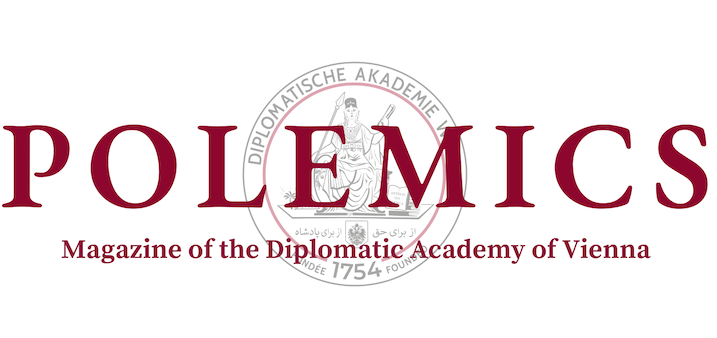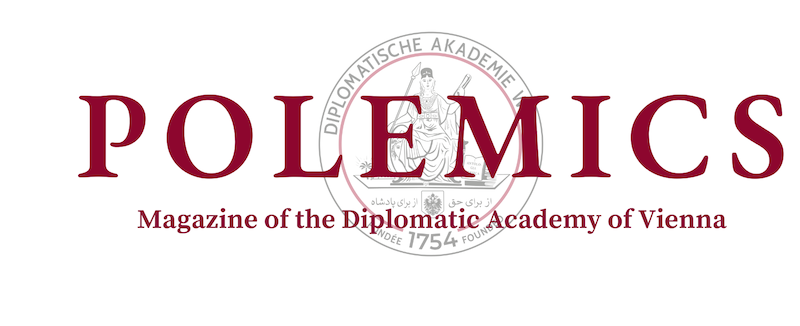Vienna’s Gaze to the East
Empress Maria Theresia originally founded the Oriental Academy in 1754 to train Habsburg diplomats with a knowledge of the East and with a particular emphasis on the Ottoman Empire. Though trade between the two regions had taken place since the Classical Age, the earliest diplomatic contacts between the Habsburgs and Ottomans date back to the beginning of the 16th century.
In this period, Holy Roman Emperor Charles V inherited an empire of which it was said “the sun never set” and within it had built an enormous diplomatic corps for early modern standards. To the East, the Ottoman Empire was ruled by Sultan Suleyman the Magnificent, a curious and ambitious leader who dreamed of conquering Europe. During their lifetimes they clashed numerous times, including the historic Siege of Vienna in 1529. Notwithstanding the failed attack on this gateway city, the Ottomans were banging on the doors to the centre of Europe. In the years following this attempted attack on the Habsburg capital, Charles V was surrounded by religious and political enemies, including Francis I, King of France, and the aforementioned Sultan of the Ottomans, Suleyman. With rivals on all sides, and particularly in France, Charles V sought to secure his eastern borders through diplomacy rather than war.
An Imperial Journey
Negotiating with the Ottomans was not, however, smooth sailing, since the Habsburg emperor did not have a permanent representation in Constantinople as he did in the other European capitals. Charles’ younger brother, Ferdinand, had made attempts to get a diplomatic foothold in the Turkish court in his fight for the Hungarian throne, but envoys repeatedly came back empty–handed. Charles felt the need to intervene, and in the spring of 1533, sent trusted advisor Cornelius de Schepper to Constantinople with two objectives. His first objective was to maintain secrecy over his connections to the Habsburg emperor and broker a peace over the Hungarian throne for Ferdinand, who he was officially representing. His second priority, however, was to familiarise himself with the Turkish court and gather reconnaissance on relations between the Ottomans and their relations with other European powers, especially the French.
Masked as the diplomat of Ferdinand, De Schepper’s cover did not hold for long: “From the beginning they saw me as the man from the emperor, as there were many who recognized me.” In his letters from his time in Constantinople, De Schepper maintained secrecy, mentioning that certain subjects could only be spoken of in person. When the Grand Vizier, chief advisor to the sultan, asked De Schepper upon his arrival if he had any gifts or messages from Charles, the diplomat answered in the negative, essentially denying his ties with the emperor. Even though everyone involved knew the role of De Schepper, he was the one setting the tone, never dropping his cover. In a strange city with no friends and few allies, faut le faire. Under these circumstances, De Schepper still somehow managed to broker a deal which satisfied both Ferdinand and Charles.
In the winter of 1533, De Schepper returned to Vienna and Spain to report on his mission ́s results to both Ferdinand and Charles. Upon reporting to the Habsburg emperor, he was ordered to return to Constantinople to continue his missions. When he arrived back in the Turkish capital in late spring of 1534, De Schepper had two audiences with the sultan in which the Ottoman ruler pitted French and Habsburg interests against each other. De Schepper did not have official authority to conclude an accord with Suleyman on behalf of Charles V, only in the name of Ferdinand. The sultan listened, of course, but he wanted to negotiate with the representative of the emperor, which De Schepper was officially not. The diplomat was torn between his position as close advisor to Charles, and his official cover as Ferdinand’s envoy, who did not represent the emperor. The fact that no thorough deal was made between the sultan and the Holy Roman Emperor was partially due to this constant struggle.
Success in Failure
French ambassadors whispering in the ear of Suleyman and general unwillingness towards peace constituted the other main obstacle for De Schepper’s objectives. In a letter to Charles, he made this very clear: “Sire, the Turk does not want a truce or peace with your majesty. The French king is the reason for this.” On the one hand, this meant that Ferdinand would likely not end up on the Hungarian throne with the support of the sultan. To complicate matters, the French also tried to persuade Suleyman to launch new military campaigns in Habsburg territory. On the other hand, this proved that De Schepper’s efforts to look for Ottoman-French connections yielded results. As of then, the emperor was sure that the other European powers had already worked their way into the Turkish court, turning Constantinople into a battleground for ambassadors. Once again, the biggest rivals were France and the Habsburg Empire, who dominated the European international system in the 16th century.
Even though De Schepper returned without a concrete peace over the Hungarian throne, he completed the second part of his task, conveying information on Franco-Ottoman relations. Arguably even more important was how he paved the way for the future. More than 20 years later, the Habsburgs would start to send permanent ambassadors to Constantinople. De Schepper had taken a great interest in Ottoman culture, which made his accounts one of the primary sources for Habsburg politicians to understand the Turkish court. His voyage and personal contacts symbolise the fascinating preliminary diplomatic contacts between two different empires, each with their culture. As the Ottomans started playing a more active role in Europe, De Schepper was the first to measure the diplomatic weight of Suleyman in the international balance.









